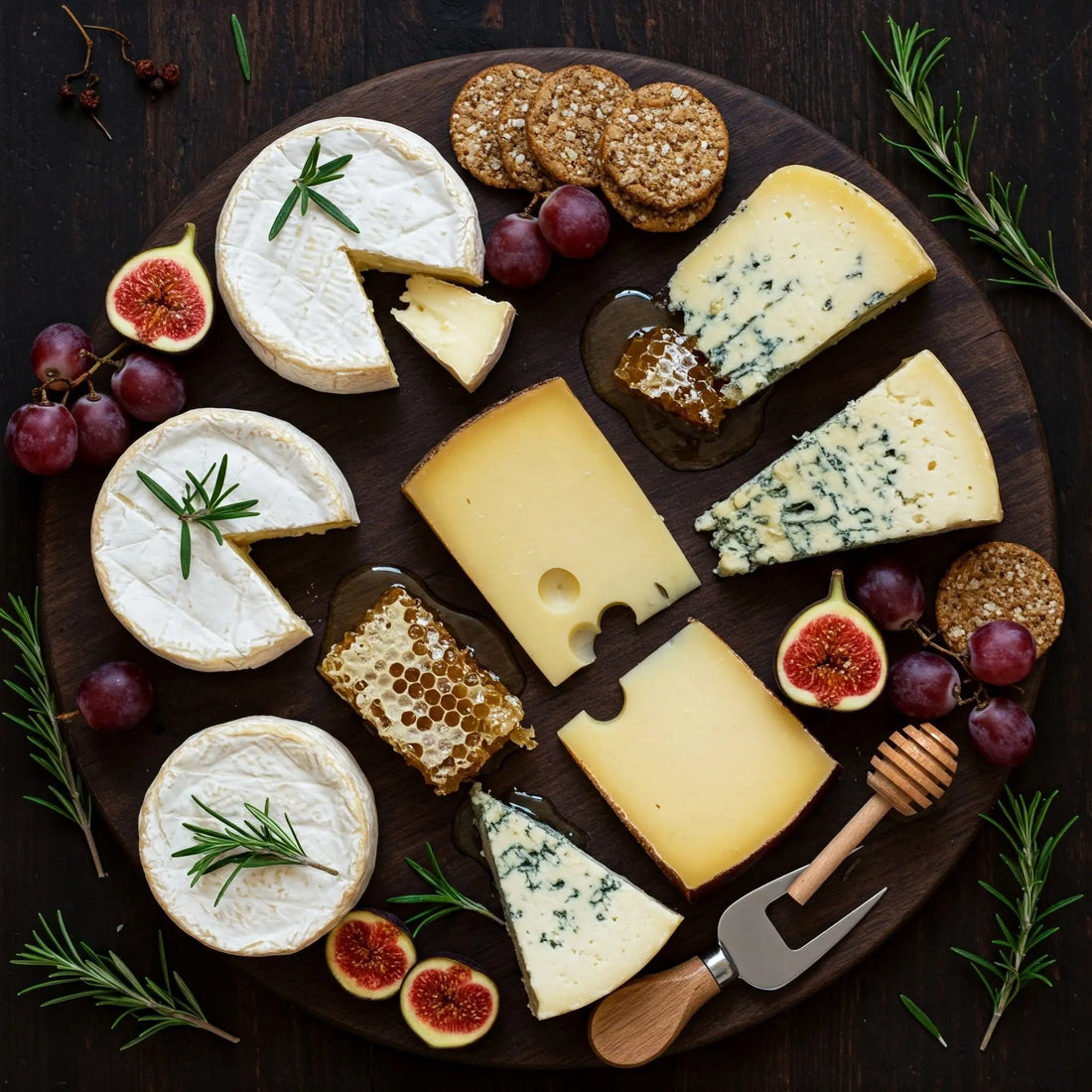
How to Build the Ultimate Cheese Board: A Guide from Wedgely
Share
Creating a cheese board is an art form, and with a little guidance, you can become a master cheesemonger in your own home. At Wedgely, we believe that everyone should have access to amazing cheese, and a beautifully arranged cheese board is the perfect way to showcase those delicious flavors. Whether you're hosting a party, enjoying a cozy night in, or just want to treat yourself, this guide will help you build the ultimate cheese board.
1. The Cheese Selection: Variety is Key
- Choose a range of textures: Include a soft cheese (like brie or goat cheese), a semi-hard cheese (like Gouda or Havarti), a hard cheese (like cheddar or Parmesan), and a blue cheese (like Gorgonzola or Stilton). This variety provides different mouthfeels and flavor profiles.
- Consider different milk types: Incorporate cheeses made from cow's milk, sheep's milk, and goat's milk. Each type of milk imparts a unique flavor.
- Think about flavor profiles: Aim for a balance of mild, medium, and bold cheeses. This ensures there's something for everyone to enjoy.
- How much cheese? A good rule of thumb is to allow about 1-2 ounces of cheese per person if it's an appetizer, or 3-4 ounces per person if it's the main course.
2. The Accompaniments: Sweet, Savory, and Everything In Between
- Crackers and bread: Offer a variety of textures and flavors. Include plain crackers, seeded crackers, breadsticks, and a sliced baguette.
- Fruit: Fresh fruit like grapes, apples, pears, and berries add sweetness and a pop of color. Dried fruit like apricots and figs also pair well with cheese.
- Nuts: Walnuts, almonds, pecans, and pistachios provide a crunchy contrast to the creamy cheese.
- Spreads: Honey, jam, marmalade, and chutney offer sweet and savory options that complement the cheese.
- Olives and pickles: These add a briny, tangy element that cuts through the richness of the cheese.
- Charcuterie (optional): If you want to add some meat to your board, include prosciutto, salami, or other cured meats.
3. The Board: Presentation Matters
- Choose the right size and shape: Select a board that's large enough to hold everything without looking cluttered. Wood, slate, and marble are popular choices.
- Arrange the cheese: Place the cheeses at different points on the board, leaving space in between. Cut some of the cheeses into slices or cubes to make them easier to eat.
- Add the accompaniments: Arrange the crackers, fruit, nuts, and spreads around the cheese. Fill in any empty spaces with smaller items like olives and pickles.
- Garnish: Fresh herbs like rosemary, thyme, or sage can add a pop of color and fragrance to your board.
4. Tips for Success
- Serve cheese at room temperature: This allows the flavors to fully develop.
- Provide cheese knives: Offer a different knife for each type of cheese to prevent flavors from mixing.
- Don't overcrowd the board: Leave some space between the items so that everything is easily accessible.
- Have fun! Creating a cheese board should be enjoyable. Experiment with different cheeses and accompaniments to find your favorite combinations.